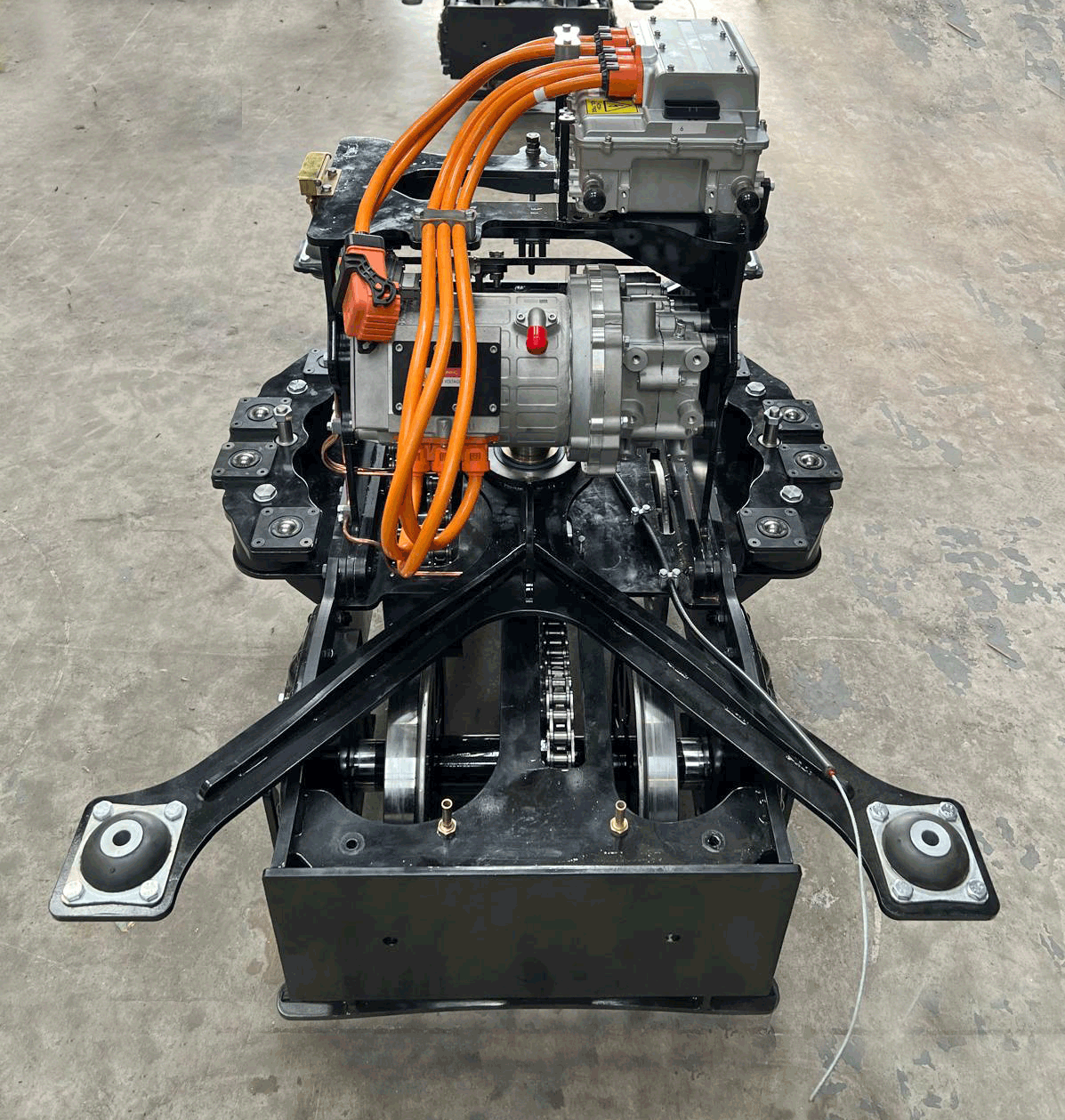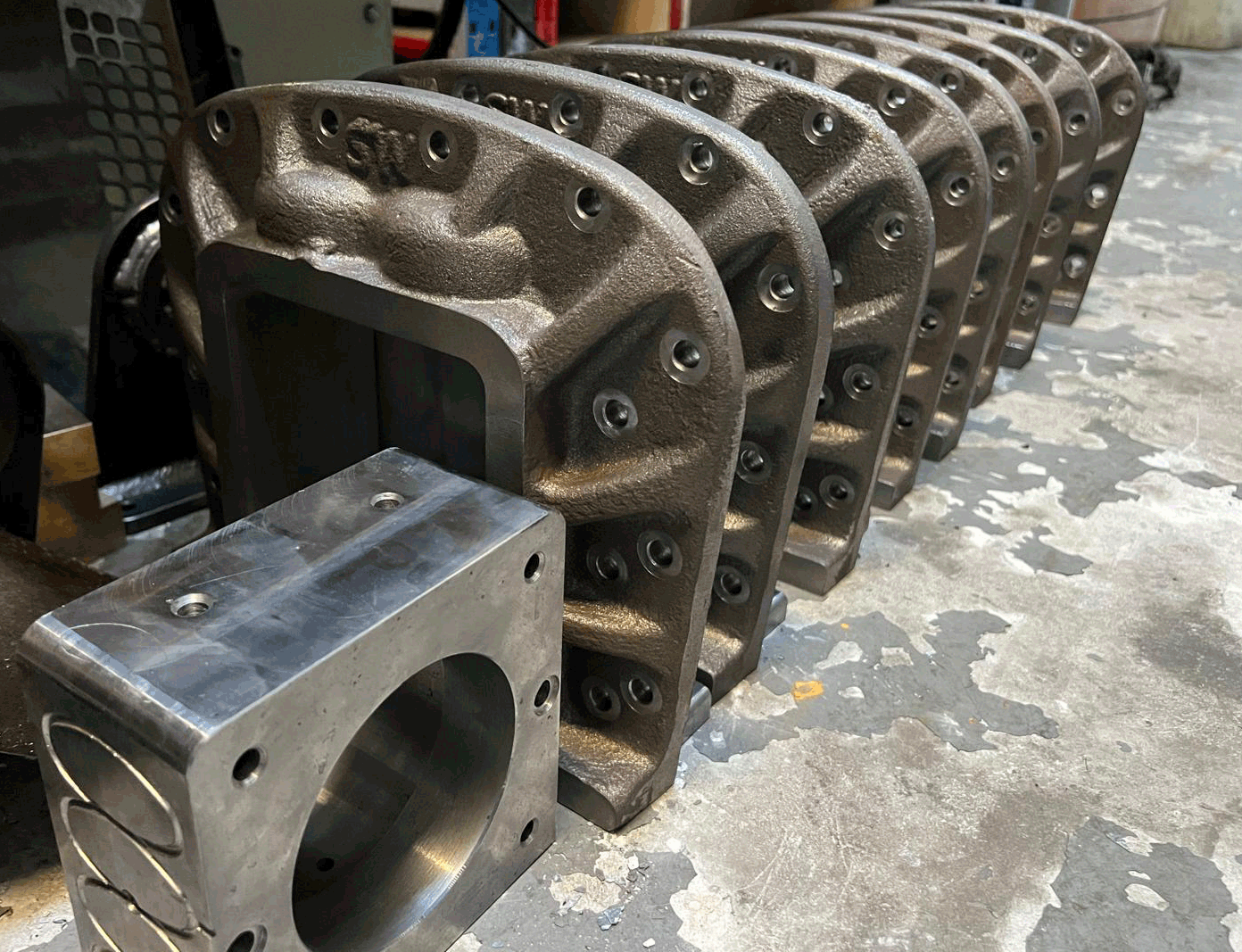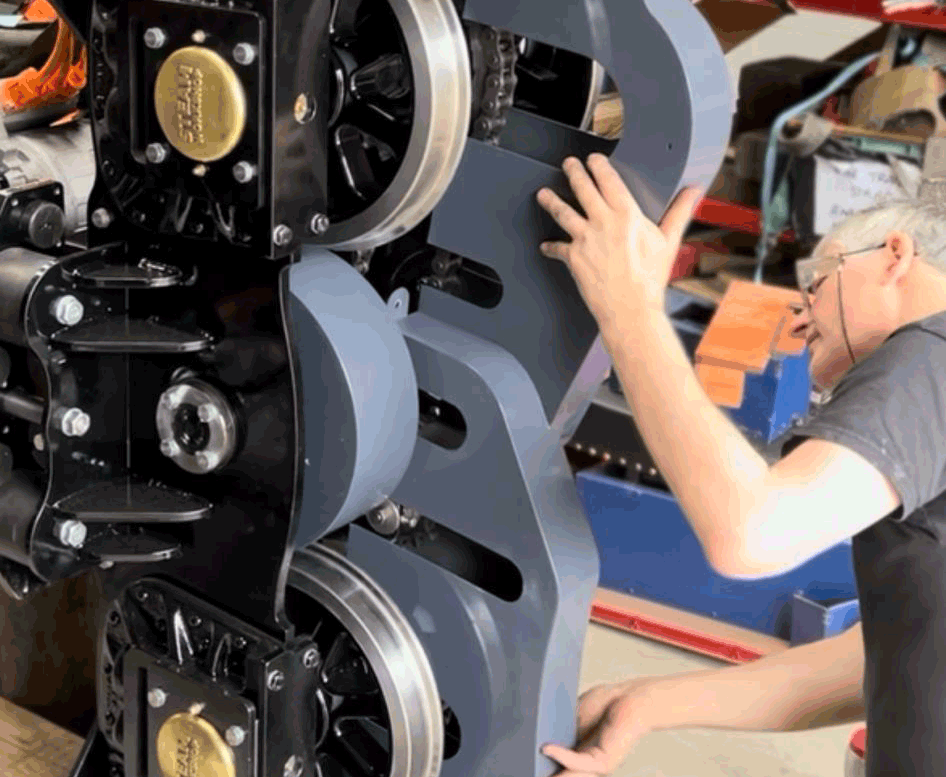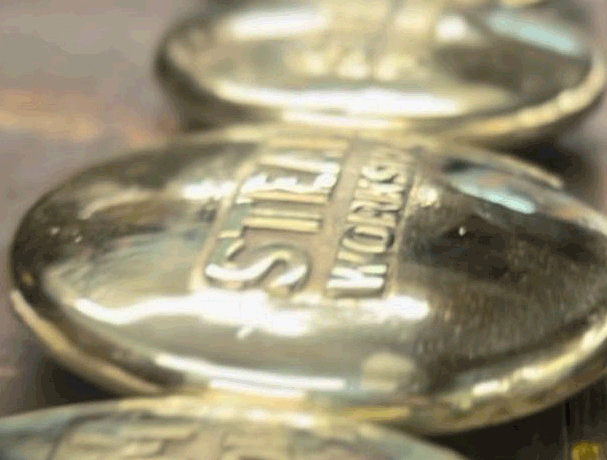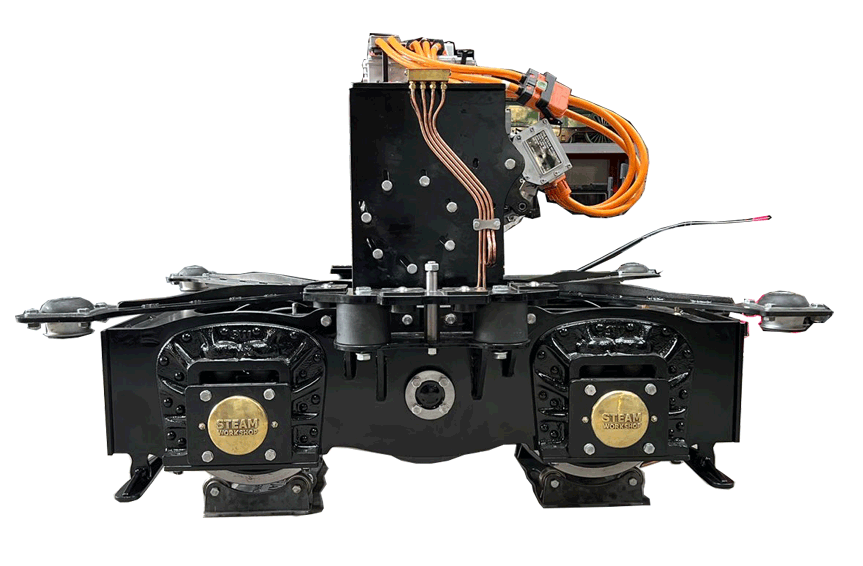The bogies employ some interesting and innovative design features which we think contribute significantly to the locomotive’s performance.
The Evolution Class bogie employs sealed self aligning roller bearings and rubber anti-vibration suspension throughout. The fully independent primary suspension is fairly traditional by design, contained in the cast iron horn guide and acting upon the top of the bespoke steel axle box housing. The 4 secondary suspension units transfer the load from the locomotive frame down to wings outboard of the bogie frame to provide stability. Then there are 4 further tertiary rubber suspension units controlling the drive and braking forces being transferred through the bogie pivot pin to ensure a smooth delivery and transition of power.
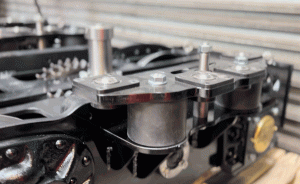
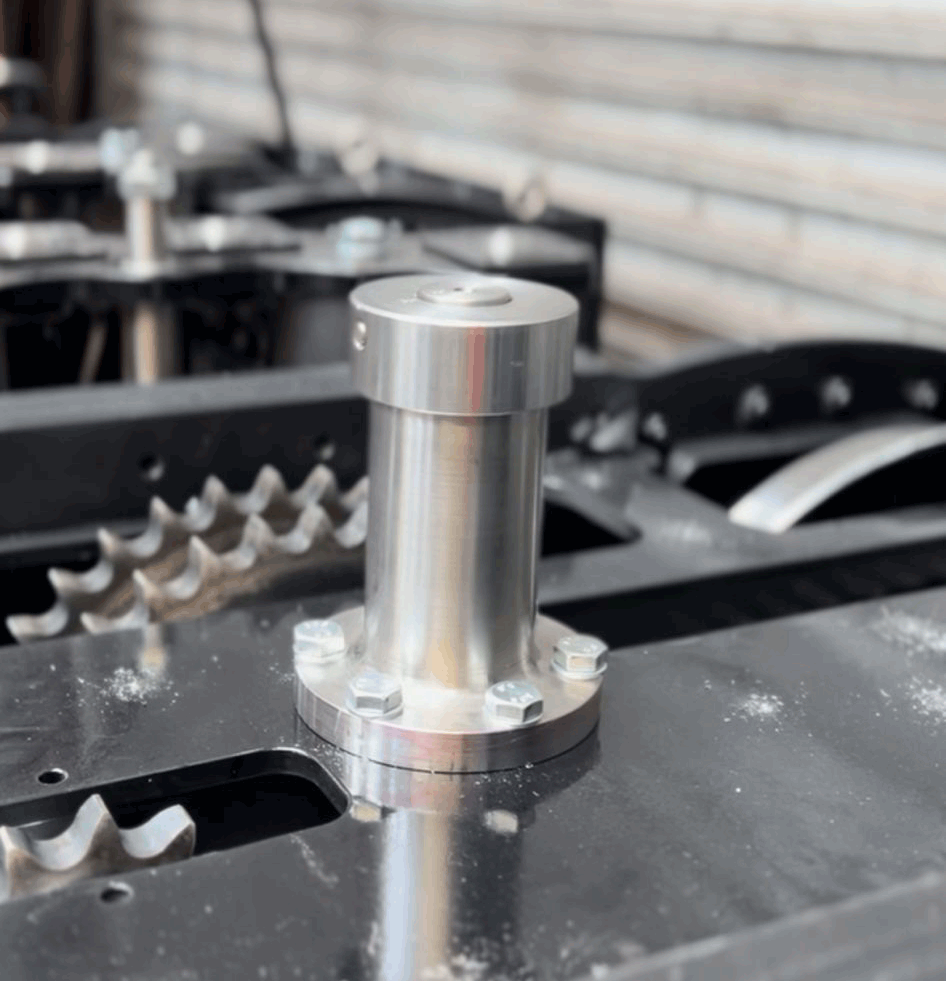

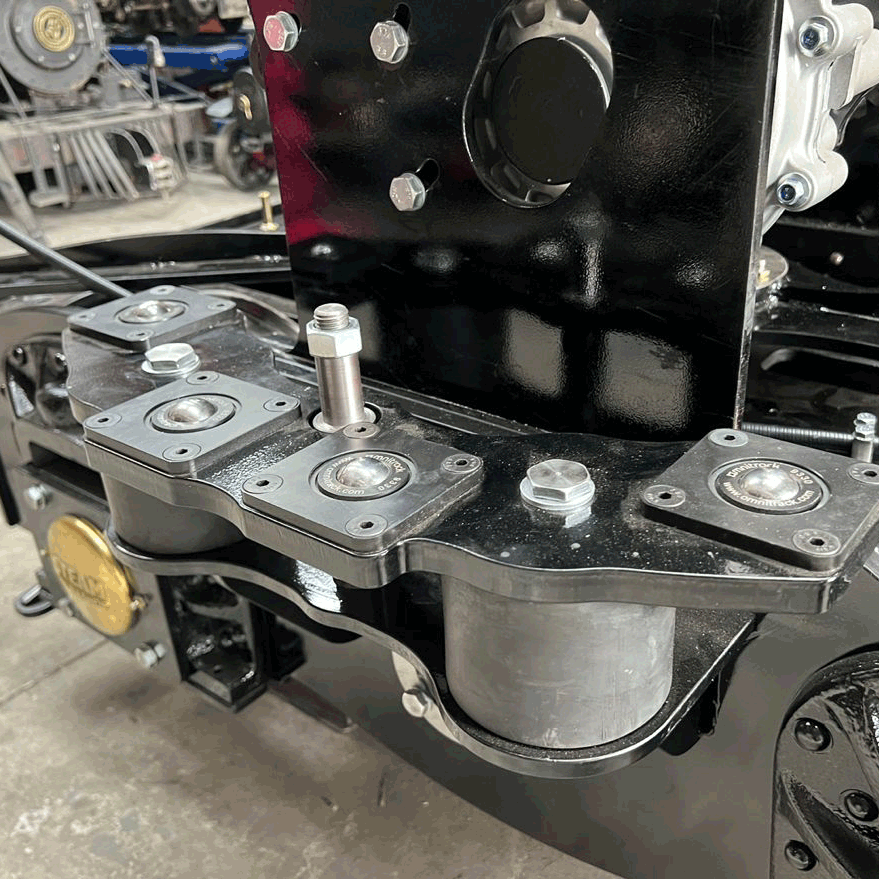
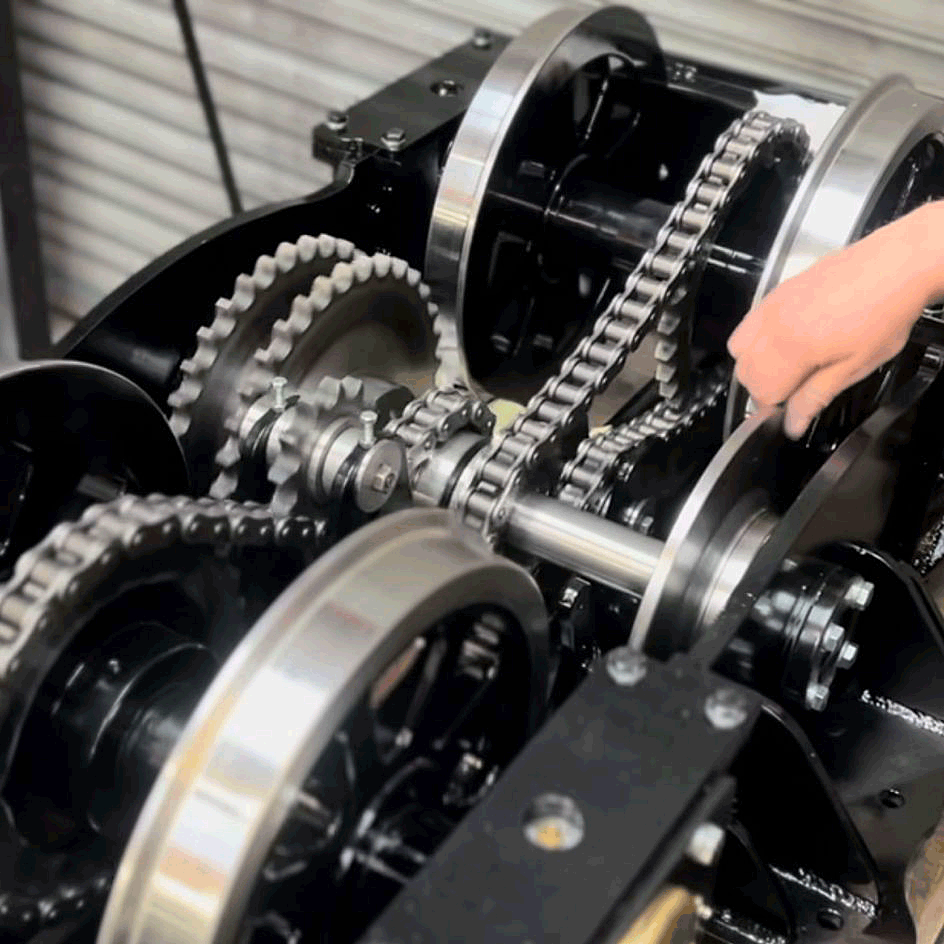
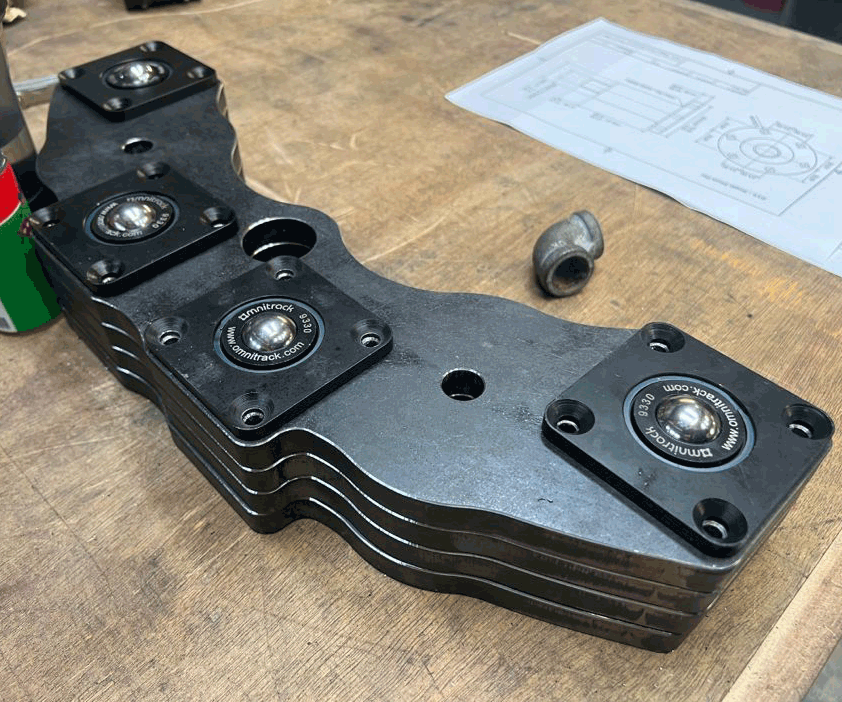
The fundamental function of a bogie is to transfer the locomotive weight to the rails whilst still maintaining the ability to rotate about a point. This is usually achieved by employing slipper plates, greased to slide upon one another. Even employing modern free sliding materials the lowest we could reduce the force needed to pivot the loaded bogie was 80kg, meaning that the flange would have to rub against the rail to impart that force as the loco entered a corner. This is standard practice throughout the miniature railway world, but the Evolution Class bogie uses 8 spherical ball load transfer units acting upon ground gauge plate, which slashed this figure to 2kg of lateral force to rotate the bogie. This means that in normal use, the coning angle of the wheel tread is enough to steer the locomotive on the rail head rather than the flange, reducing flange and rail wear massively.
The bogie frames are fully cut from 10mm steel plate, and the sides and ends are tabbed and slotted together around 10mm plate stretchers before welding up. This construction method ensures that the bogie frames stay stable and square as it forms what is essentially an extremely strong triangulated box.
The bogie frames are fully cut from 10mm steel plate, and the sides and ends are tabbed and slotted together around 10mm plate stretchers before welding up. This construction method ensures that the bogie frames stay stable and square as it forms what is essentially an extremely strong triangulated box.

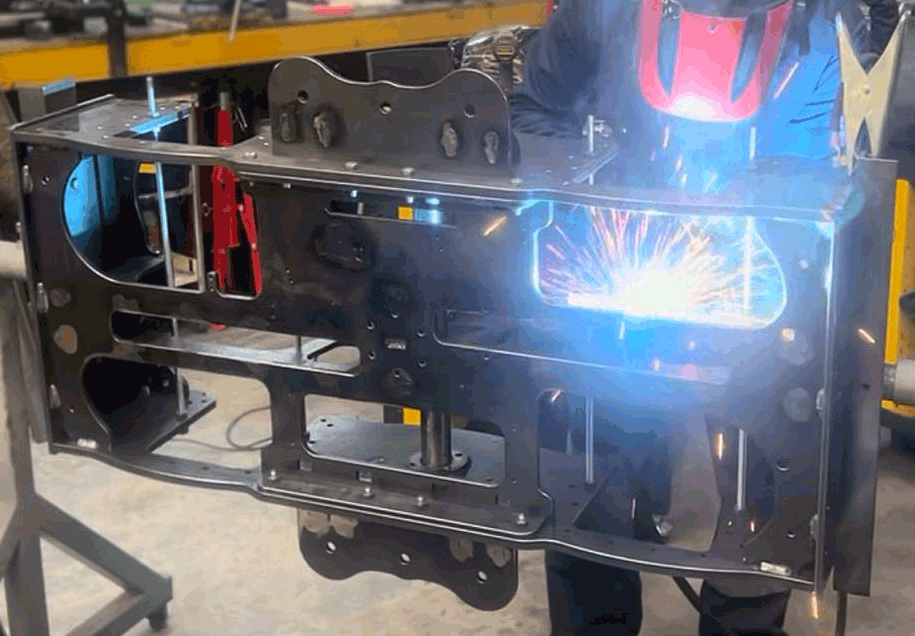
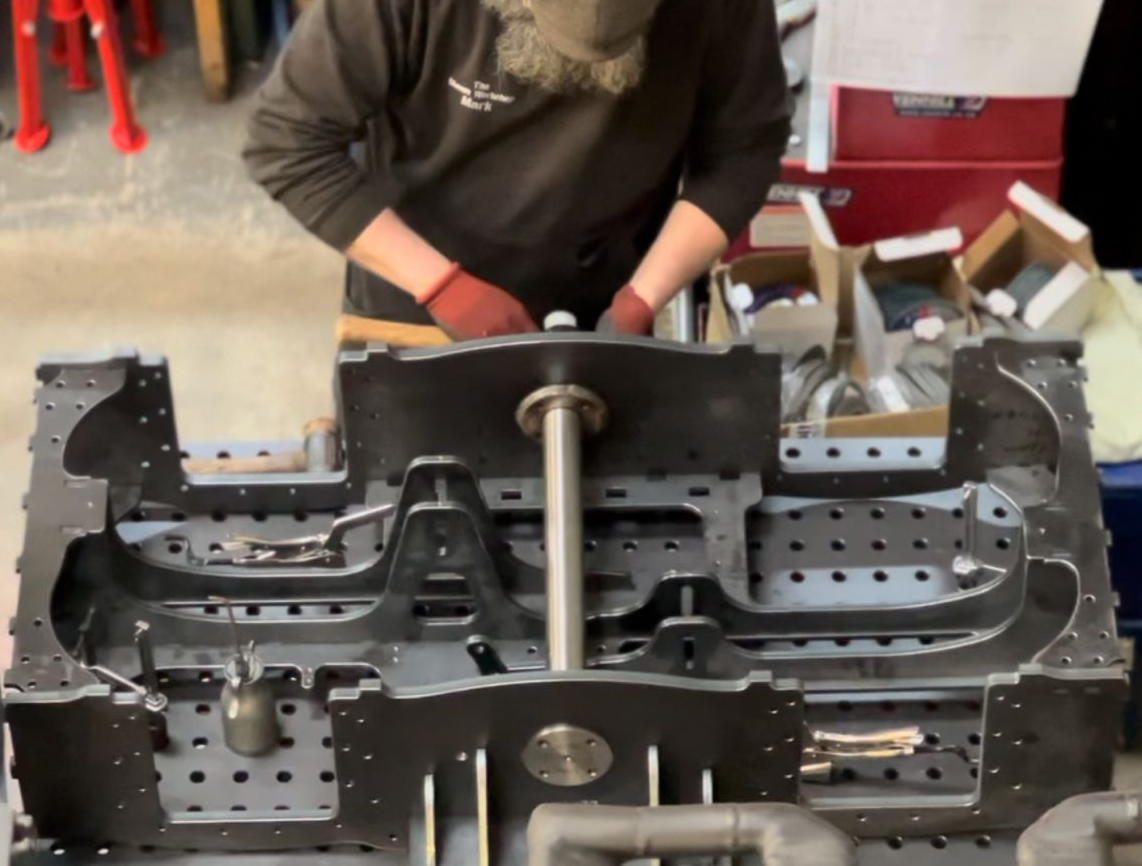
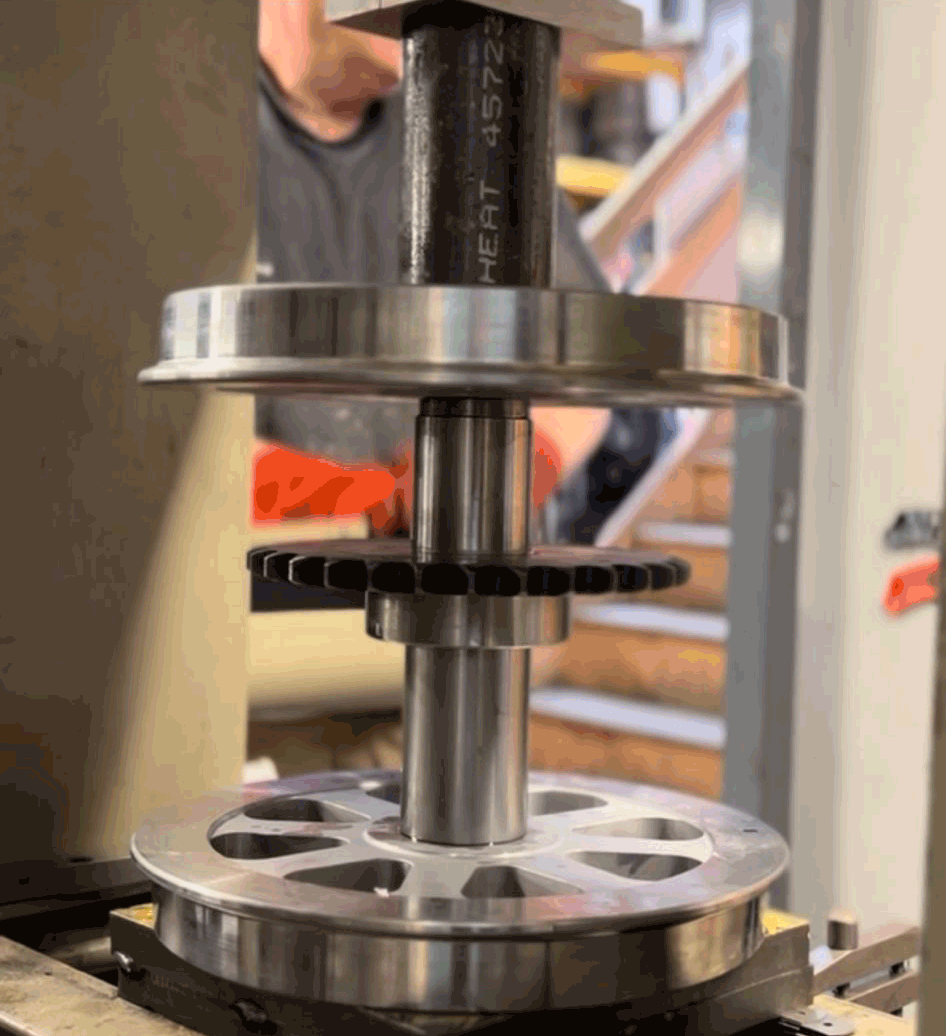
The wheels are milled and turned from billet EN8 Steel, so although they look like traditional castings, they are in fact extremely strong solid steel.
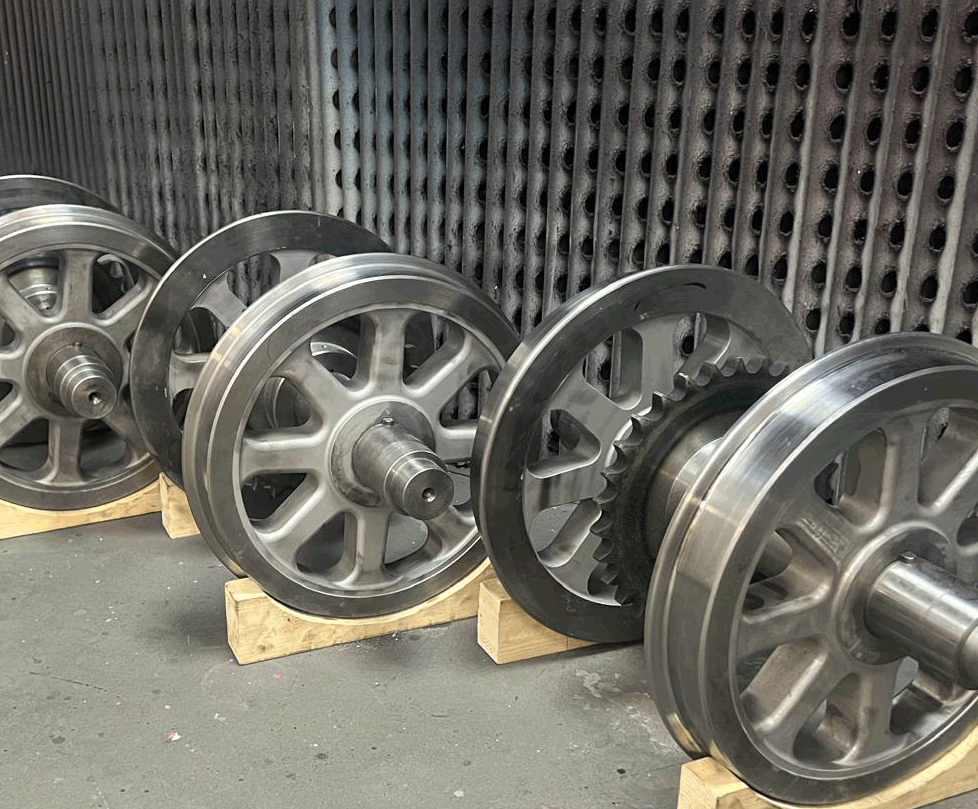
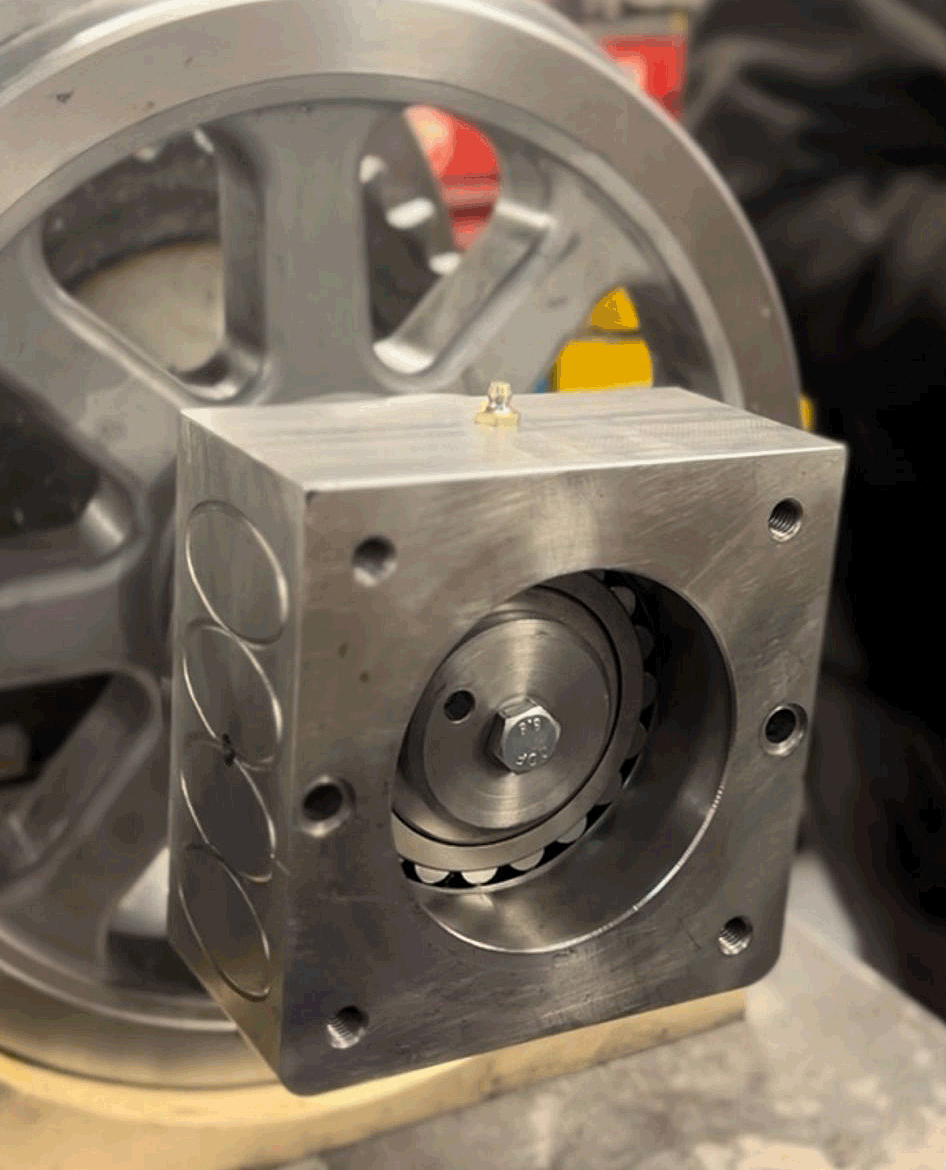
The motor, coupled to our 6 to 1 gearbox is then bolted into a sub frame assembly designed to pivot within the fixed motor frame. The ability to swing the motor on it’s sub frame through a prescribed ark of controlled movement enables the main drive chains to be easily tensioned and locked in place with clamping bolts by accessing through a bonnet door rather than having to scrabble around underneath. That whole motor frame and sub assembly is then bolted to the top of the main bogie frame to form the bones of the bogie’s structure.
The cast iron horn guides are chunkily designed, CNC machined to slot tightly into the frame sides, and then secured by rivet headed bolts made here in house to give the whole thing an authentic and robustly engineered feel. The axleboxes themselves are milled from billet steel, with integrated grease nipple fed pathways, milled in suspension retention cups on the top and they house heavy duty self aligning sealed roller bearings designed to be maintenance free for over 40,000 hours service!
The gearing on the Evolution Class bogie is bespoked to the railway’s needs, and driven through heavy duty 1” split link chains. The whole lot is then encased in gear guards designed to double as oil baths should you wish.
The cast iron horn guides are chunkily designed, CNC machined to slot tightly into the frame sides, and then secured by rivet headed bolts made here in house to give the whole thing an authentic and robustly engineered feel. The axleboxes themselves are milled from billet steel, with integrated grease nipple fed pathways, milled in suspension retention cups on the top and they house heavy duty self aligning sealed roller bearings designed to be maintenance free for over 40,000 hours service!
The gearing on the Evolution Class bogie is bespoked to the railway’s needs, and driven through heavy duty 1” split link chains. The whole lot is then encased in gear guards designed to double as oil baths should you wish.
